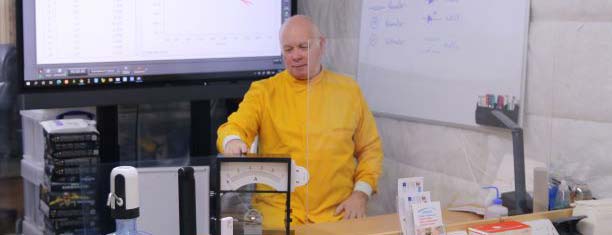To make the Poinsettia pH paper:
- Cut the flower petals (actually specialized leaves called bracts) into strips
- Place the strips into a beaker.
- Add enough water to cover the plant material and simmer on a hot plate.
- Filter the liquid into another container (such as a shallow petri dish) and discard the plant matter.
- Saturate a piece of filter paper with the poinsettia extract.
- Allow the filter paper to dry and cut the colored paper into test strips.


























